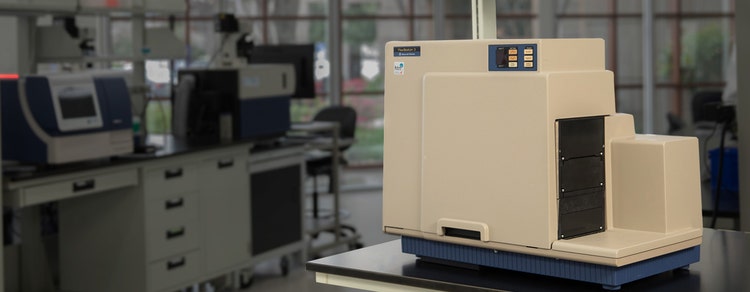

FlexStation 3 Multi-Mode Microplate Reader
Precise optics, fluidic transfer, and assay flexibility on one integrated microplate reader
Automated pipetting ensures consistent performance over multiple assay conditions on a microplate
The FlexStation® 3 Multi-Mode Microplate Reader measures absorbance, fluorescence intensity, fluorescence polarization, luminescence, and time-resolved fluorescence. Programmable liquid handling allows for perfectly timed, automated biochemical and cell-based assays. The reader adds up to three transfers of assay reagents from a 96- or 384-well source plate to enhance assay design using integrated fluidics.

Enable more assay conditions
Define individual reagents to be delivered to each well reducing reagent consumption and allowing for more assay conditions to be explored on a single microplate.

Automate pipetting
Improve assay quality and increase throughput with automated pipetting ensuring consistent addition time and minimizing errors, thus providing tighter assay CVs within and between experiments.

Validate your reader
Get fluid transfer validation with our PathCheck Feature to quantify pipettor head performance. Use it with SoftMax® Pro Software and IQ/OQ/PQ validation protocols for FDA 21 CFR Part 11 compliance.
Features

Onboard pipettor
Integrated 8-channel or 16-channel pipettor increases assay flexibility by transferring reagents from 96 or 384 distinct wells in a source plate to the read plate.

Optimal assay excitation
Dual monochromators allow users to target the optimal assay excitation and emission wavelengths and eliminate the need to change expensive band pass filters between experiments.

Low volume applications
SpectraDrop™ Micro-Volume Microplate offers a high-throughput solution for low volume measurement, accelerating sample preparation time and increased productivity in DNA, RNA and protein research.

Robot integration
The FlexStation 3 reader can be integrated with all leading partner robots and with our out-of-the-box automation solution for savings on up-front integration time and resources.
Latest Resources
Featured Applications
Customer Breakthrough
Applications of FlexStation 3 Multi-Mode Microplate Reader
Specifications & Options of FlexStation 3 Multi-Mode Microplate Reader
*Using lowest settings and speed read when available.
Download Data Sheet

Resources of FlexStation 3 Multi-Mode Microplate Reader
FlexStation® 3 Series Multi-Mode Microplate Readers
FlexStation 3 Microplate Reader with
Includes: FlexStation 3 Base System, 1 year warranty covering parts & labor. **Does not include 8 or 16 channel pipettor head, must be purchased separately and MUST be ordered at the time of ordering the instrument.
*Inquire regarding partial case purchases.